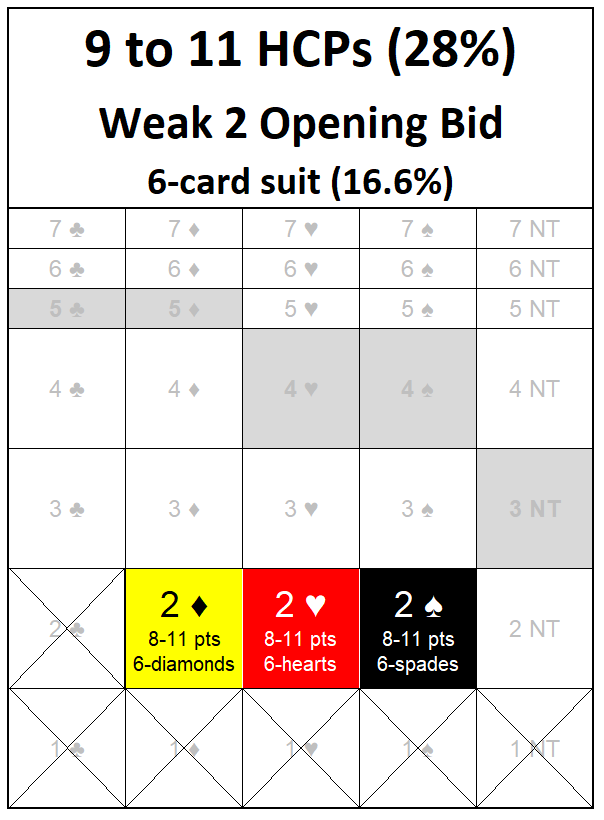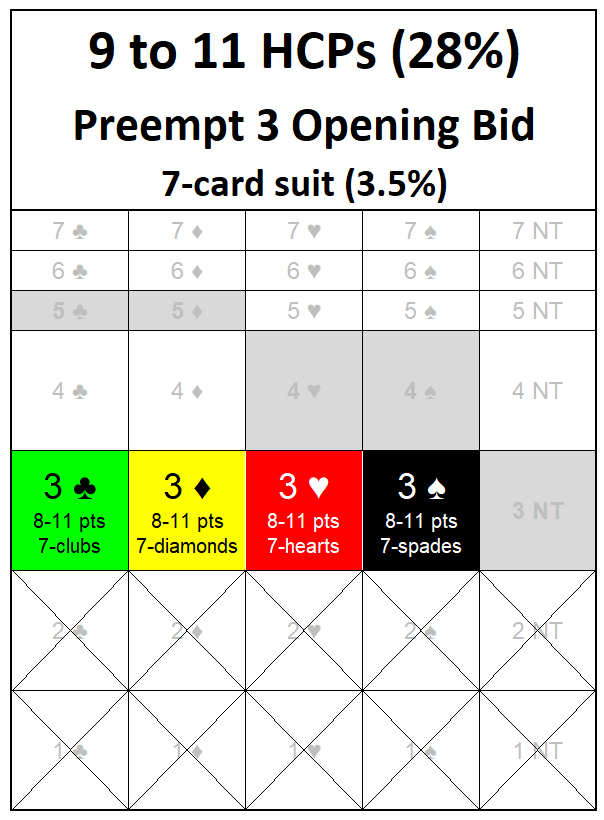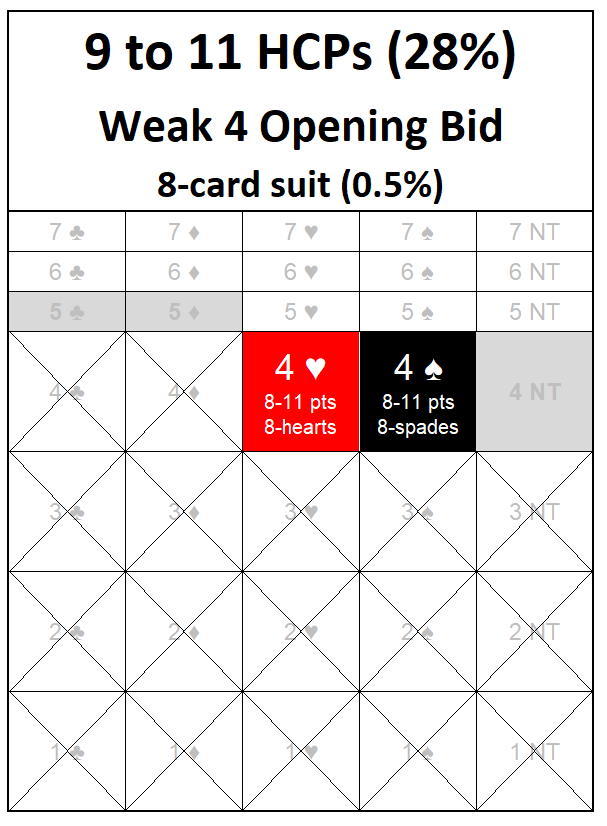 Opening a suit at the 2-level reduces the bidding room which makes it more difficult for the opposition to communicate with each other.
Opening a suit at the 2-level reduces the bidding room which makes it more difficult for the opposition to communicate with each other.
 Opening a suit at the 3-level significantly reduces the bidding room which makes it more difficult for the opposition to communicate with each other.
Opening a suit at the 3-level significantly reduces the bidding room which makes it more difficult for the opposition to communicate with each other.
 Opening a suit at the 4-level eliminates the bidding room for the opposition. The opposition's next bid must be a game level bid.
Opening a suit at the 4-level eliminates the bidding room for the opposition. The opposition's next bid must be a game level bid.